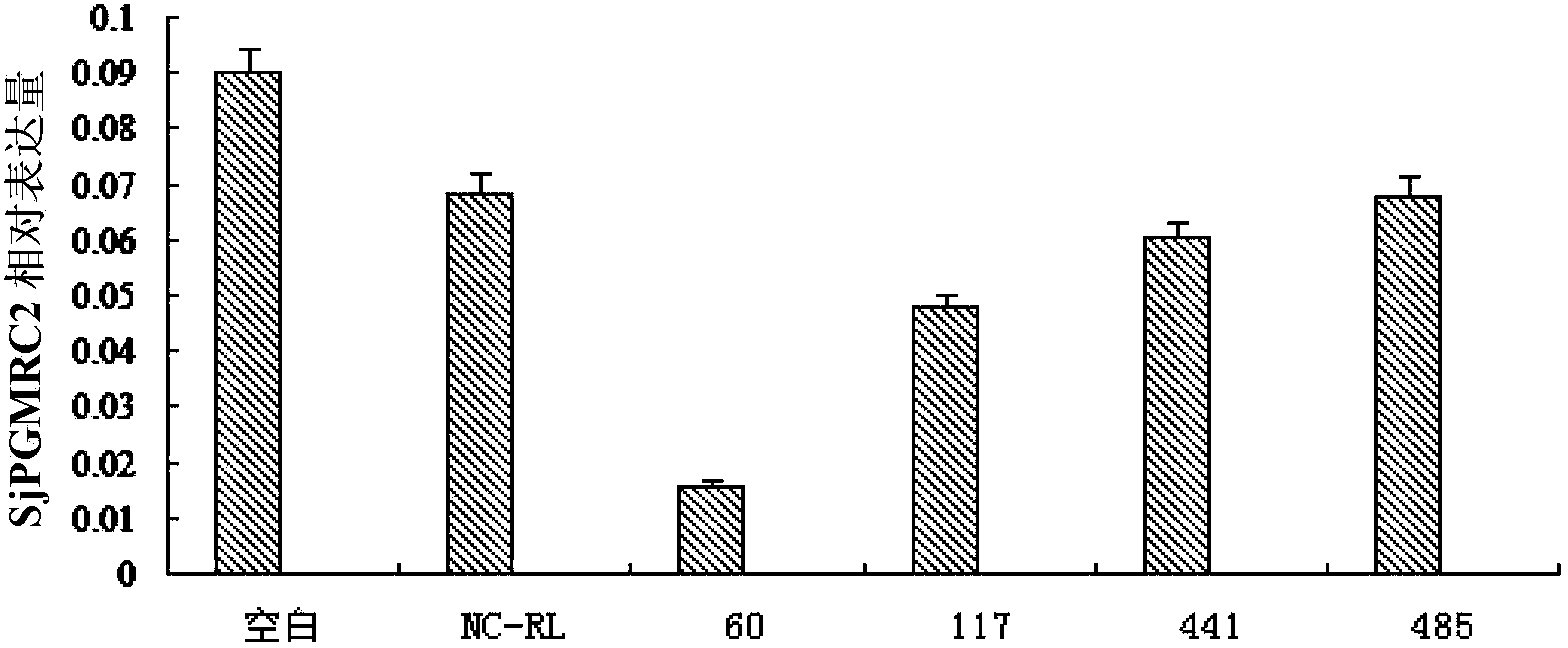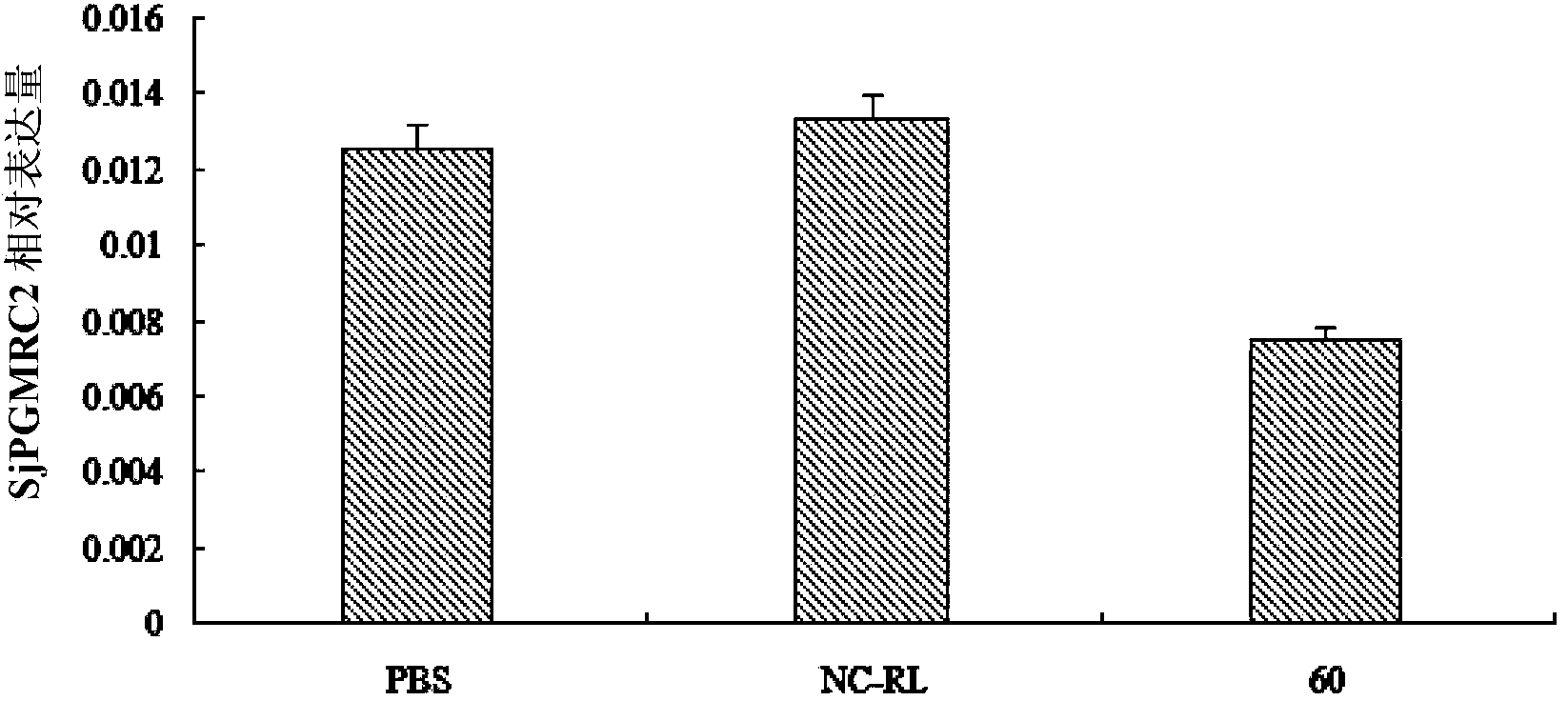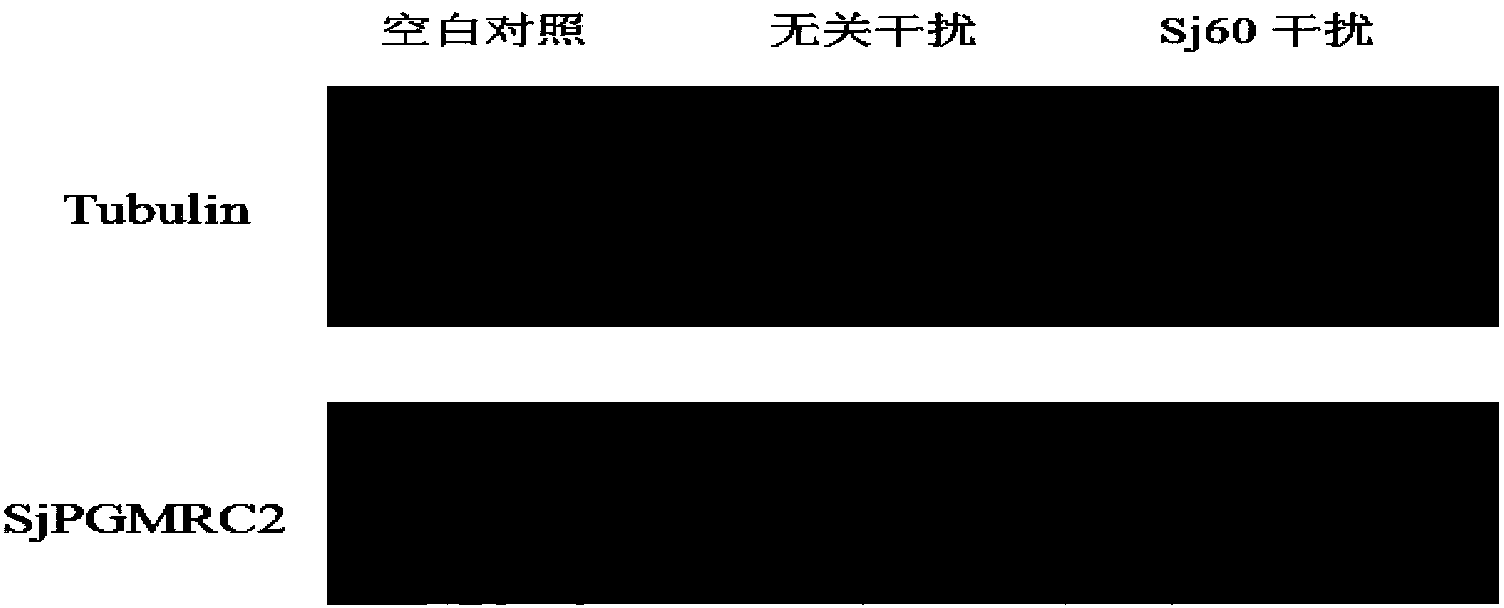Small interfering ribonucleic acid (siRNA) of schistosoma japonicum katsurada membrane-associated progesterone receptor component (PGMRC2) gene and application thereof
A technology for schistosomiasis and schistosomiasis, applied in the fields of molecular biology and biomedicine, can solve serious problems, the prospect of schistosomiasis is not optimistic, and there are no drugs for schistosomiasis, etc.
- Summary
- Abstract
- Description
- Claims
- Application Information
AI Technical Summary
Problems solved by technology
Method used
Image
Examples
Embodiment 1
[0023] Example 1 In vitro RNA interference
[0024] 1. Design of siRNA molecules
[0025] Four pairs of siRNA molecules were designed according to the PGMRC2 gene sequence of Schistosoma japonicum (GeneBank: FN317689.1) (see Table 1 below). The NC-RL siRNA molecule was an irrelevant control, and the siRNA was designed and synthesized by Shanghai Jima Pharmaceutical Technology Co., Ltd.
[0026] Table 1 siRNA sequence
[0027]
[0028] 1.2 Collection of worms
[0029] The abdominal patch was used to attack and infect New Zealand white rabbits, each infected with about 5000 Schistosoma japonicum cercariae. After the 14th day of infection, the worms collected by the hepatic vein perfusion method were dissected and washed once quickly with warm PBS containing double antibodies, and then washed three times with worm culture medium in an ultra-clean table.
[0030] 1.3 Processing of rabbit red blood cells
[0031] ①Suck 0.1ml heparin from the syringe, collect 1ml blood from the ear vein of the...
Embodiment 2
[0038] Example 2 RNA interference in vivo
[0039] 1. Method steps
[0040] BALB / c mice were divided into three groups: blank control group, irrelevant interference control group and siRNA treatment group, with five mice in each group. The abdominal patch was used to infect cercariae of Schistosoma japonicum, and each mouse infected about 100. Beginning on the 13th day after infection, the mice in the blank control group were injected with 0.1ml PBS solution (pH=7.4) per day in the tail vein, and the mice in the control group were injected with 0.1ml NC-RL(50ug) / PBS(pH=7.4) per day in the tail vein. =7.4) solution. Mice in the siRNA treatment group were injected with 0.1 ml of SjPGMRC2 gene siRNA (50ug) / PBS (pH=7.4) solution every day via tail vein. After 7 consecutive injections, the worms were dissected and the hepatic portal vein was used to flush the worms. Observe and count the worms. Same as above, using Real-time PCR to detect changes in the transcription level of PGMRC2 ...
PUM
 Login to View More
Login to View More Abstract
Description
Claims
Application Information
 Login to View More
Login to View More - R&D
- Intellectual Property
- Life Sciences
- Materials
- Tech Scout
- Unparalleled Data Quality
- Higher Quality Content
- 60% Fewer Hallucinations
Browse by: Latest US Patents, China's latest patents, Technical Efficacy Thesaurus, Application Domain, Technology Topic, Popular Technical Reports.
© 2025 PatSnap. All rights reserved.Legal|Privacy policy|Modern Slavery Act Transparency Statement|Sitemap|About US| Contact US: help@patsnap.com



